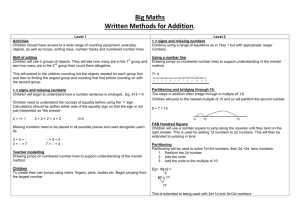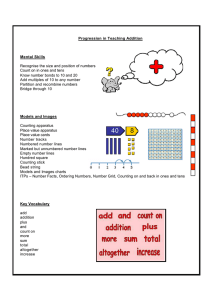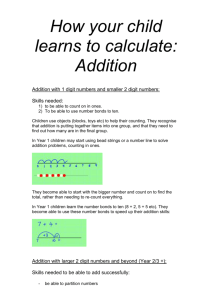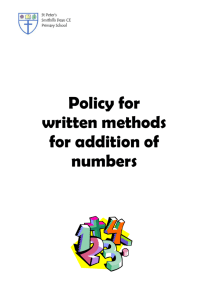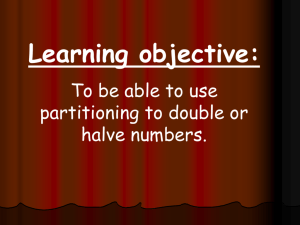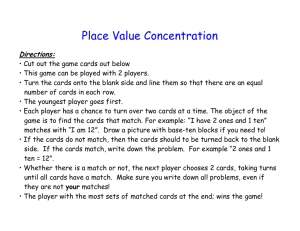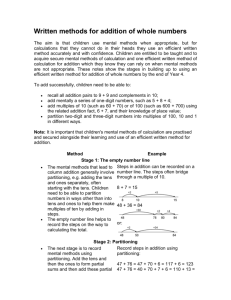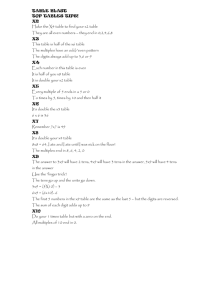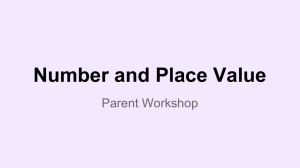The Partitioning Method for Addition
advertisement
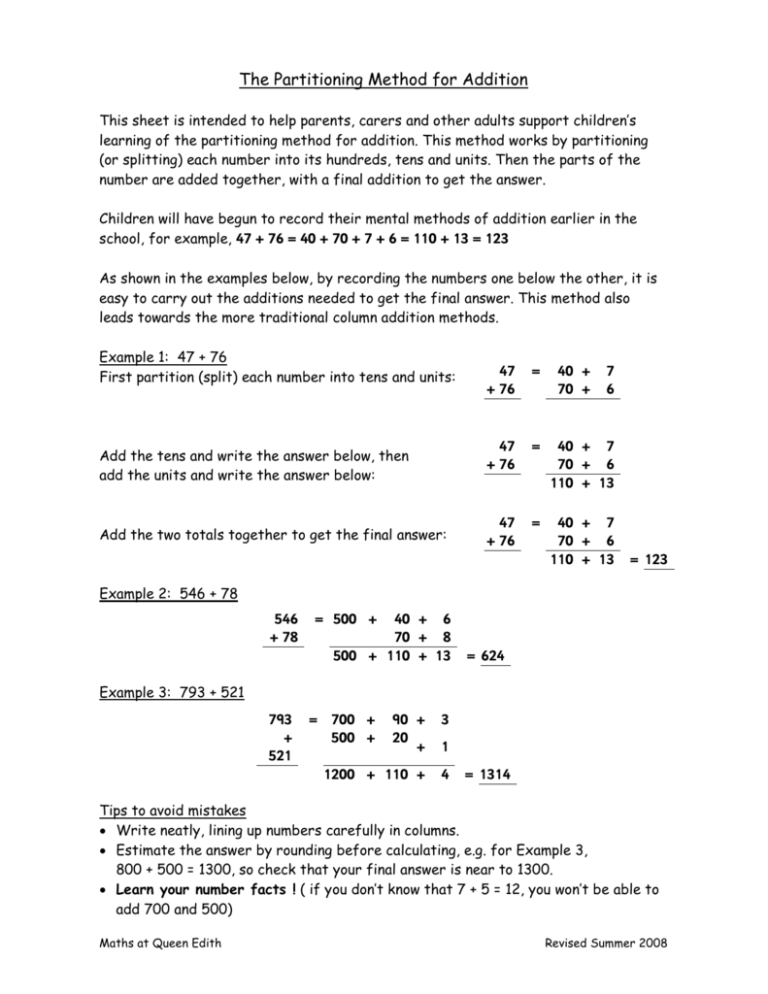
The Partitioning Method for Addition This sheet is intended to help parents, carers and other adults support children’s learning of the partitioning method for addition. This method works by partitioning (or splitting) each number into its hundreds, tens and units. Then the parts of the number are added together, with a final addition to get the answer. Children will have begun to record their mental methods of addition earlier in the school, for example, 47 + 76 = 40 + 70 + 7 + 6 = 110 + 13 = 123 As shown in the examples below, by recording the numbers one below the other, it is easy to carry out the additions needed to get the final answer. This method also leads towards the more traditional column addition methods. Example 1: 47 + 76 First partition (split) each number into tens and units: Add the tens and write the answer below, then add the units and write the answer below: Add the two totals together to get the final answer: 47 + 76 = 40 + 70 + 7 6 47 + 76 = 40 + 7 70 + 6 110 + 13 47 + 76 = 40 + 7 70 + 6 110 + 13 = 123 Example 2: 546 + 78 546 + 78 = 500 + 40 + 6 70 + 8 500 + 110 + 13 = 624 Example 3: 793 + 521 793 + 521 = 700 + 500 + 90 + 20 + 3 1200 + 110 + 4 1 = 1314 Tips to avoid mistakes • Write neatly, lining up numbers carefully in columns. • Estimate the answer by rounding before calculating, e.g. for Example 3, 800 + 500 = 1300, so check that your final answer is near to 1300. • Learn your number facts ! ( if you don’t know that 7 + 5 = 12, you won’t be able to add 700 and 500) Maths at Queen Edith Revised Summer 2008

